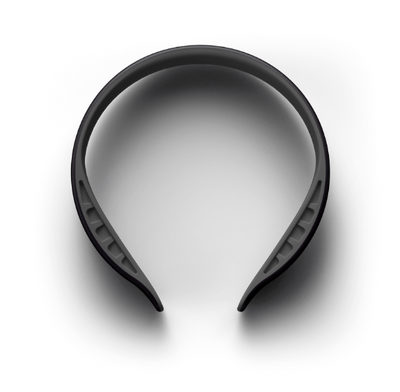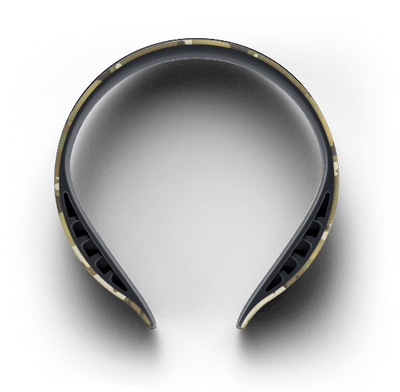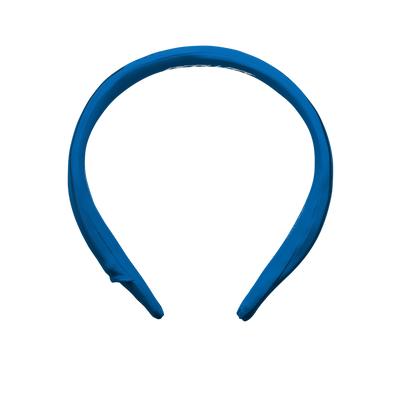Q30 Medical Advisor, Dr.Jason Cormier recently released a book, Driven: Hip-Hop, Fast Cars, Basketball and Brain Surgery - The Inspirational Story of Jason Cormier. We’re excited to share an excerpt from that book focused on the Q-Collar.
Dr. Cormier, a Southern Louisiana native, played basketball and completed his undergraduate studies at Louisiana State University, where he was a teammate of Shaquille O’Neal. He then graduated from The Louisiana State University School of Medicine in New Orleans. Dr. Cormier went on to complete his training in Neurosurgery and General Surgery at Duke University and The University of Alabama-Birmingham.
Now, Cormier is the Director & Department Head of Neurosurgery and Spine Surgery at Lafayette Surgical Specialty Hospital in Lafayette, LA. For his work, Cormier has been named one of “America’s Top Surgeons” by the Consumers Research Council of America. In addition to being a practicing neurosurgeon, Dr. Cormier is working to make football and car racing safer in conjunction with the National Football League, Formula 1, The National Hot Rod Association (NHRA), NASCAR and more.
We encourage you to check out his book to learn more about his incredible story. The book is available through Amazon, Barnes & Noble, and other retailers. Below is Dr. Cormier’s chapter on the Q-Collar:
The collar that reduces ‘brain slosh’
“Today’s action provides an additional piece of protective equipment athletes can wear when playing sports to help protect their brains from the effects of repetitive head impacts.” – Christopher M. Loftus, M.D.
Driving a car at high speed is not the only way to sustain injuries to the head and neck, but it was his passion for both motor sports and brain safety that drew Jason to a remarkable new device called the Q-Collar.
A concussion can occur when the head receives a direct impact or is subjected to sudden acceleration and deceleration causing the brain to move suddenly and collide with the skull.
However, even seemingly trivial ‘bumps’ caused by a fall or a collision of heads in a soccer game can have a negative impact on one’s quality of life. Doctors call these bumps ‘sub-concussive’ head impacts that can result in everything from headaches, confusion and fatigue to dizziness, lack of orientation, inability to concentrate and decreased reaction time.
Jason knew that any of those symptoms could lead to a fatal result for anyone driving a vehicle of any sort, on or off the track. But now, beyond the racetrack, coaches – at both the professional and youth sports level – are taking the dangers of concussion and sub-concussive impacts more seriously than in past years. There is also a greater understanding of the long-term effects of neck and spinal injuries from sporting activities.
As a neurosurgeon, Jason uses his skill to work on patients after they have received a brain or spine injury. However, he has become increasingly focused on preventing those injuries before they happen.
Hundreds of hours spent at racetracks, working with the drivers – including the young drivers on the ARCA circuit – as well his involvement with the ongoing research at the Society for Brain Mapping & Therapeutics (SBMT) has increased his focus on preventing and diminishing brain injuries in sports. Rather like breakthroughs in NASA’s space program, developments that start in the professional sports arena can trickle down to benefit people in their everyday lives.
One such innovation is the Q-Collar. Doctors refer to the movement of the brain within the skull as “slosh,” a key cause of structural changes to the brain. Medical experts have long recognized that eliminating or reducing slosh is essential for long-term brain health for anyone involved in contact sports or similar at-risk activities.
The Q-Collar is a deceptively simple and unobtrusive device that helps stabilize the brain by applying light pressure to the jugular veins. This pressure slightly increases blood volume inside the skull and helps reduce the brain’s movement – which is a primary cause of brain injuries. In doing so, the Q-Collar aids in the protection of the brain from effects associated with repetitive sub-concussive head impacts.
Jason was not involved in the creation of the Q-Collar but quickly became an enthusiastic advocate. “They were off the ground before I came on board and I got involved in the third quarter, if you will,” he explains. “They had a couple of people in the NFL already wearing the Q-Collar, so the technology was already in place.”
By this time, Jason’s major project, Motorsport Safety Group, was up and running and he had seen first-hand how racecar drivers, including the teenage ARCA novice drivers, often take repeated jarring bumps. With the help of Dr Julian Bailes, he was connected to the developers of the Q-Collar and expressed his interest in getting involved.
For any innovation related to healthcare, approval by the Federal Drug Administration (FDA) is essential for widespread acceptance by sports authorities, schools and the general public. According to the FDA, from 2006 to 2014, the number of emergency department visits, hospitalizations, and deaths related to traumatic brain injury (TBI) increased by 53%. It is estimated that anywhere from 1.6 million to 3.8 million sports- and recreation-related TBIs occur in the United States annually.
Achieving FDA approval is a convoluted procedure and the Q-Collar creators were finding the process particularly challenging.
When Jason approached the developers of the Q-Collar, they could see that Motorsport Safety Group was a respected organization with goals similar to their own. In addition to Jason himself, MSG’s Medical Advisory board includes Dr. Julian Bailes, Dr. Mark Hadley and other nationally recognized experts in the field of neurological wellbeing.
“I was convinced with the technology behind the Q-Collar and reviewed it with Dr Julian [Bailes],” says Jason. “We talked to the Q-Collar team and it was decided that my involvement could be a synergistic relationship wherein I could push this through the racing organizations that I was already involved in. That included NASCAR, the National Hot Rod Association (NHRA) and the International Council of Motorsport Sciences [ICMS]. We were going to attempt to increase awareness that way.”
Jason remembers when the developers were trying to get the Q-Collar approved by the FDA: “I was about to do a presentation at the Jockeys’ Guild in 2017. It was part of MSG’s platform about safety in sport and injury protection. I was on the same panel with Jeff Crandall, Chair of the NFL’s engineering committee and Director of the UVA Center for applied Biomechanics, and I took the opportunity to introduce the Q-Collar because I really believed in it. I had spoken to Julian just prior to that and that's where the whole concept of bringing the Collar on board into the Motorsport Safety Group initiative became a reality. I was looking for technology that would help prevent head injury, because there was really nothing out there that was all that convincing.”
Jason has strong opinions about the effectiveness of most sport safety equipment. “We knew that the helmets were just a false sense of security, outside of providing some protection against skull fractures and skin laceration, the helmets are not effectively protecting the brain,” he says frankly. “The Q-Collar is based on the physiology of the woodpecker and the battle ram. We have some things in common with those two animals that particularly strike their heads. It only makes sense to base brain protection on animals that strike their heads that have that inherently as part of their anatomy. It's something that they do every day.”
With Jason and MSG on board, the people at Q-Collar would continue to focus on certain areas, such as football, where they already had inroads. “From my standpoint, I was personally interested in auto racing but also all levels and atmospheres of high contact sports, so it made sense that I became involved,” he explains. “So with that, in some ways, we approached the FDA together and they started having some more progress.”
The FDA had more questions, but they were able to work through them with Jason on board. “From that standpoint,” he says, “I became part of the Medical Advisory Committee and helped push the Q-Collar, at least in the racing organizations, and now many other organizations are interested.”
In addition to the science, the presence of experts such as Dr. Cormier and Dr. Bailes added to the validity of the Q-Collar.
On February 26, 2021, the U.S. Food and Drug Administration authorized the marketing of the Q-Collar. In a press release issued on that date, the FDA described the Q-Collar as: “a new device intended to be worn around the neck of athletes aged 13 years and older during sports activities to aid in the protection of the brain from the effects associated with repetitive sub-concussive head impacts.”
The FDA announcement also included the following quote:
“Today’s action provides an additional piece of protective equipment athletes can wear when playing sports to help protect their brains from the effects of repetitive head impacts while still wearing the personal protective equipment associated with the sport,” said Christopher M. Loftus, M.D., acting director of the Office of Neurological and Physical Medicine Devices in the FDA’s Center for Devices and Radiological Health.
“Even before it was FDA approved, local high schools here in my town were using it,” states Jason. We had to sign waivers and be under an IRB. That’s an Institutional Review Board that reviews research involving human subjects. There was a kid that had decided to wear it. He had headaches every day after practice, even running simple drills, like running the fifty-yard dash. He was coming home with headaches and after wearing the Q-Collar, he went his entire season and didn't have any headaches at all. And now he's on the map for a college scholarship this year. That's just one of several stories. It's been used in more than 2,800 football games and the results are really remarkable. They're demonstrating the reduction of injuries to the brain by over eighty percent.”
On a personal note, Jason adds, “I always wear a Q-Collar when I’m driving.”
Extracted from the Book “Driven: Hip-Hop, Fast Cars, Basketball and Brain Surgery, The Inspirational story of Jason Cormier” with Mike Harris








